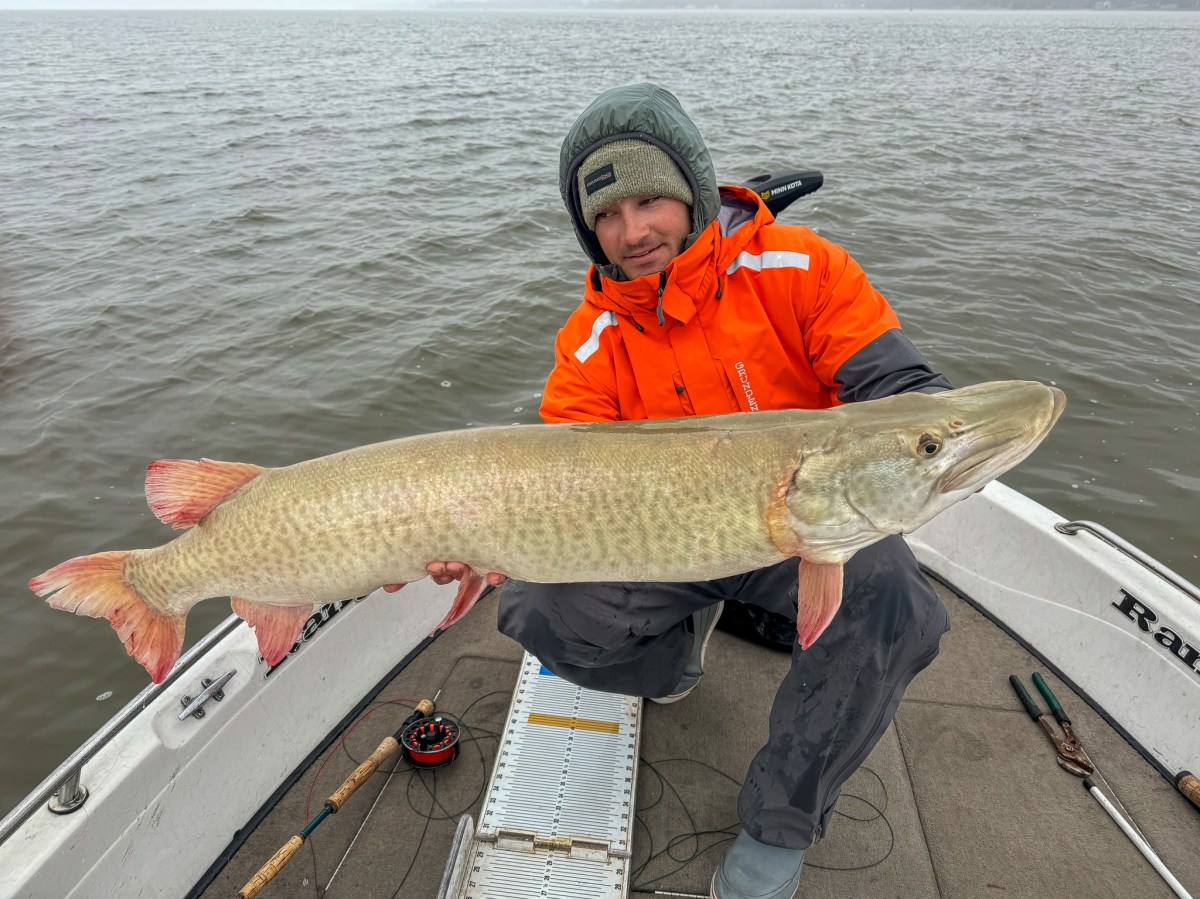To date I have targeted muskies on the fly in five states over the course of about twelve years. And to date I’ve yet to catch one. Oh, I’ve had follows and sniffs, but I’ve never even had one fully open its mouth so that I could screw it up after the take. Fly muskies are my bane, but that doesn’t mean I don’t understand why the pursuit is so appealing. Nor does it mean I don’t have the utmost respect for dedicated anglers who are really good at playing this very tough game.
One of those anglers is Wisconsin-based guide Gavin Marquart. Come fall, his attention shifts from smallmouth bass to muskies in both moving and still water. He personally loves to chase them, but also willingly accepts the challenge of putting fly anglers of all skill levels in the zone. It’s a complex sport, no doubt, but if you’re thinking about joining the team, it’s important to know that you can get your feet wet — and even put that first muskie notch in your belt — with just a little bit of planning and gear that’s not as costly or specialized as you might think.
Listen to this week’s episode on Apple, Spotify, or wherever you get your podcasts.
Take Me to the River
Most states provide detailed information about muskie populations, including stocking schedules and even landing records in some cases. Marquart says that data is a great tool when you’re first getting into fly fishing for muskies, because naturally you want to put yourself in a location with a high number of fish. But his suggestion is to then focus on the body of moving water with the highest number of fish. It’s no secret that muskie occupy lakes of all shapes and sizes, but if the goal is to nail that very first one, you’re better off with some current.
“A big part of the muskie game is mental,” Marquart says. “So, when you’re out on a giant body of water like Green Bay just throwing flies in the open, you feel like it’ll take a miracle to come across a fish. But in a river, you know you’re going to cross one in certain spots. That doesn’t mean it’s going to eat, but you can be far more confident that your fly will at least be seen by a muskie. Rivers change around every bend, which really helps keep confidence up in a game that takes patience. The next logjam might produce the bite, and if it doesn’t, it could happen in the next pool.”
The cool part is that if you’ve already spent time catching trout, bass, or walleyes on a local river that also holds muskies, you already know where the fish live. In a river setting, muskies post up in the same seams, eddies, bowls, areas of slow water, and structures where you’d expect to find other predatory species. Marquart calls out creek mouths, the soft water below larger rapids, and soft pockets below dams as some of his favorite locations to target.
Anyone interested in jumping into muskie flyfishing tends to be eager to learn about rods, reels, lines, and flies. This makes perfect sense, of course, because those are what achieves the goal first and foremost. But Marquart reminds rookies that there’s more you need to consider if you’re serious about the quest, and you’ll need a few more things in your arsenal to seal the deal.
“No matter where you’re fishing, sticking a muskie on a fly is a challenge,” he says. “You’re not going to get the opportunity all the time, so it’s critical that you’re prepared for it when it happens beyond just the grab and the fight. You need to have a hook file, because if your fly contacts a rock, dulls up even a bit, and you don’t fix that, it could cost you your one fish of the day. You should always have a hook cutter, too, because if those heavy-gauge, sharp hooks wind up in you, you’ll need them, and thrashing muskie can easily put them there.”
Marquart also emphasized the importance of carrying a jaw spreader. Though these devices can, at times, hurt the fish a bit, you’ll strain the health of a muskie more by struggling to open its mouth without them in the event the fly is far back in its throat. With that in mind, your standard-length pliers you use for bass fishing are not ideal for muskies. Carry long-handle pliers for the safety of both you and the fish.
Nine Is Fine
One of the biggest barriers to entry with flyfishing for muskies is the gear. Watch enough YouTube videos and you’ll be convinced specialty rods and flies that cost upwards of $50 a piece are critical. They’re not. If you target pike, carp, stripers, or just about any inshore saltwater fish, you likely already have the tools you need for the job.
“I have so many guys jump in my boat that are hesitant because they’ve seen people using 12- and 15-weight rods to throw 18-inch flies,” says Marquart. “They’re not sure if their shoulders can handle it all day, but it doesn’t have to be that way. You can be perfectly effective with a 9-weight fly rod, which is much more manageable to cast all day.”
Read Next: The Best Musky Lures of 2025
Will a 9-weight throw an 18-inch fly as well as a 12-weight? Maybe not, but according to Marquart another misconception is that you must use flies that big to be successful. The truth is, 6- to 8-inch flies will turn muskie heads, and if your 9-weight is pointed straight at that fish when it eats and you don’t goof a solid strip strike, you’ll plant the hooks firmly. After that, a 9-weight will provide ample backbone to fight the fish.
Read the full article here





